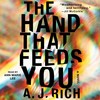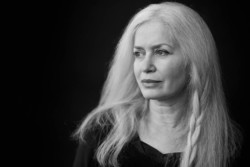Plus, receive recommendations and exclusive offers on all of your favorite books and authors from Simon & Schuster.
Table of Contents
About The Book
Morgan, thirty, is completing her thesis on victim psychology and newly engaged to Bennett, a man more possessive than those she has dated in the past, but also more chivalrous—and the sex is hot. She returns from class one day to find Bennett brutally mauled to death, and her beloved dogs covered in blood.
When Morgan tries to locate Bennett’s parents to tell them about their son’s hideous death, she discovers that everything he has told her—where he was born, where he lives in Montreal, where he works—was a lie. He is not the man he said he was, and he had several fiancées, all believing the same promises he gave Morgan. And then, one by one, these other women are murdered. Morgan’s research into Bennett has taken on new urgency: in order to stay alive, she must find out how an intelligent woman like herself, who studies predators, becomes a victim.
For readers of Girl on a Train and Luckiest Girl Alive, this “twisty, unsettling thriller” (The New York Times) is an “irresistible” (Vogue) collaboration between two outstanding writers. “The Hand That Feeds You goes from zero to terrifying in about five pages…Once this thriller gets its teeth into you, it doesn’t let go” (The Tampa Bay Times).
Reading Group Guide
Get a FREE ebook by joining our mailing list today! Plus, receive recommendations for your next Book Club read.
Introduction
Morgan Prager, a young woman close to finishing her graduate thesis in forensic psychology, arrives home from class one day to find her fiancé, Bennett dead—mauled to death—and her own rescue dogs agitated and covered in blood. She is traumatized and guilt-stricken, struggling to comprehend how the same animals she recognized as such gentle souls could have acted so violently. When she seeks out Bennett’s parents to notify them of their son’s death, she learns that Bennett may not have been who she thought he was. In fact, it seems that everything she thought she knew about her fiancé was a lie. Desperate to uncover Bennett’s true identity and plagued with doubts about his mysterious death, Morgan embarks on a frenzied quest for the truth that leads her to several other women who have all known Bennett intimately—and who meet untimely deaths, one by one. As Morgan races against the clock to determine the truth about Bennett, save her dogs, and rescue herself, she is haunted by questions: How could she have become a victim? Will she ever be able to forgive herself? And perhaps most troubling of all: Is it true that a person’s capacity for compassion, volunteerism, and goodwill can actually cause her harm?
Topics & Questions for Discussion
1. At the start of the novel, Morgan says that she “was going to be the person who changed the definition of a predator by identifying what makes a victim” (p. 1). Would you say that she is successful at this? Why or why not? How does victimhood come to be defined within the story? Who are the victims in the book and what do they share in common? How is a victim chosen and what are the risk factors?
2. After Bennett’s death, what are some of the questions that Morgan asks herself? What is the central subject at the heart of these questions? Are the questions—or her answers to these questions—surprising? Why or why not?
3. What is pathological altruism? Why is Morgan concerned with this? Morgan’s psychiatrist, Cilla, asks: “Should people stop being kind because of unforeseeable consequences?” (p. 20). What does Morgan believe? Does the book ultimately offer any resolution to Cilla’s question?
4. The authors wrote this novel because their friend Katherine Russell Rich died of cancer before she could do so. Rich became involved with an intensely seductive man who turned out to be an impostor. Have you, or has anyone you know, had a similar experience?
5. Why does Morgan say that she was interested in studying victimology? What primary question did she hope to answer through her studies in this field? Does she ever arrive at the answer this question?
6. What does Morgan say are the five profiles of at-risk women? What factors put a person at risk of becoming a victim? What are method of approach and risk assessment, and how do they factor in to how a victim is chosen?
7. According to Morgan’s studies, how are sociopaths and psychopaths defined? What characteristics do they share, and what makes them different? What category does she believe Bennett falls into?
8. Morgan claims that she likes talking to Billie because “whatever horror [she] was reporting on became a narrative; it was transformed in the telling into a story, and as such felt further away . . . than it actually was” (p. 130). What does she mean by this?
9. When Morgan was raped as a young woman shortly after arriving in New York City, why does she say that she chose not to report the crime? How does this decision seem to have affected her later in life? Does she indicate whether she would have done anything differently if she had it to do over again?
10. When Morgan reflects upon her encounter with the man she refers to as Swampthing, she considers that perhaps it is duality that makes us human (p. 181). Her psychiatrist, Cilla, on the other hand, says that Morgan’s actions were the actions of a victim. Who do you think is correct?
11. Morgan says that she “no longer believed that anyone could start over” and that “[p]eople who believe you can don’t understand the continuum of life” (p. 236). Do you agree?
12. Why does McKenzie say that he kept seeing Billie even though he felt that something was off? Likewise, why did Morgan continue on in her relationship with Bennett despite his secrecy? Could either McKenzie or Morgan have identified sooner that something was wrong? Why or why not?
13. Morgan says that she “loathed that false notion, that one could tie up the loose ends of mystery and grief” (p. 267). What is closure, and how does one achieve closure? Do any of the characters in the book seem to have achieved closure? If so, how? Even if closure cannot really be attained as Morgan suggests, does the book seem to indicate whether or not there is still some purpose in seeking it or in believing in its possibility?
14. At the close of the story, Alfredo asks Morgan if she has heard the term the blossom. What is the blossom according to Alfredo? How does this correspond to the situation that Morgan finds herself in?
15. Evaluate the treatment of the dogs in the story. What assumptions are made based on breed and background of the dogs? Why does McKenzie choose to do the work that he does even though he says that he loses most of his cases? How does the treatment of the dogs compare to the humans in the story? What can the depiction of their treatment and their relationships with humans teach us about humanity and human interpersonal relationships?
Enhance Your Book Club
1. Compare The Hand That Feeds You to other novels that feature a character who deceives or is deceived. How is the deception revealed? Is the audience in on the fraud all along, or are they also deceived for a time? How does this affect your reaction to what occurs? What clues allow readers to finally understand the truth? How do these approaches shape our understanding of the subjects of identity, deception, and victimhood?
2. The Hand That Feeds You was a collaborative effort. Read about the genesis of the book: http://www.nytimes.com/2015/07/04/books/the-hand-that-feeds-you-a-thriller-written-as-an-act-of-love-for-its-originator.html?_r=0. Why did two authors work together to write this book, and what was their inspiration for doing so?
3. Use the book as a starting place to learn about animal rights. What can we learn from the fate of Morgan’s dogs in the book?
Product Details
- Publisher: Scribner (July 7, 2015)
- Length: 288 pages
- ISBN13: 9781476774602
Browse Related Books
Raves and Reviews
“A gripping, unnerving, and original new psychological thriller about whether it is possible to truly know another person. There are fresh – and genuinely shocking – revelations on every page.”
– Kathy Reichs
“A fascinating premise, a blindsided narrator, dangeroussurprises, and dogs. What more can you ask for?? The Hand That Feeds Youis an unnervingly credible story about the most intimate deception.”
– Abigail Thomas, author of A Three Dog Life and What Comes Next and How to Like It.
"A.J. Rich's The Hand That Feeds You is mesmerizing and terrifying—a smart, compelling thriller with the kind of suspense that burns calories while you sit perfectly still with breath held. It is also a wise wealth of information about numerous topics: dogs, forensics, the human psyche and perhaps most satisfying of all, it is an exploration of love, grief and compassion."
– Jill McCorkle, author of Life After Life and Going Away Shoes
“Extremely interesting… This slim, nasty thriller is hard to put down.”
– Kirkus
“Rich’s gripping psychological thriller addresses our basic fearsabout becoming a victim.”
– Library Journal
“Amy Hempel and Jill Ciment, writing as A.J. Rich, give life totheir late friend Kathy Rich’s unfinished thriller in The Hand That Feeds You—an unnerving, elegant page-turner.”
– Elissa Schappell, Vanity Fair
“Irresistible.”
– Vogue
“Master storytellers Amy Hempel and Jill Ciment, writing as Rich, pose provocative questions:Do nice people attract murderers? Can we ever really know anyone? Inspired by the betrayal of a friend in real life, this riveting read’s masterly prose style sets it apart.”
– O, The Oprah Magazine
“Terrific…not for [the] faint-hearted.”
– Joyce Carol Oates
“A twisty, unsettling thriller.”
– Alexandra Alter, The New York Times
“Fast-paced yet psychologically nuanced…the final twist is creepy and unexpected, and the action-packed last pages fly by as we fight alongside Morgan to understand who can be trusted.”
– Bookpage
“The Hand That Feeds You goes from zero to terrifying in about five pages…The Hand That Feeds You keeps up a breakneck pace and a tensely creepy tone, and its spare, well-crafted writing is a cut above many thrillers. That comes as no surprise, given its authors. On its cover, the book is credited to A.J. Rich, but that's a pen name for authors Amy Hempel and Jill Ciment, who wrote it together…irresistible…Once this thriller gets its teeth into you, it doesn't let go.”
– Colette Bancroft, The Tampa Bay Times
“Terrifying…gripping…a tense, intriguing psychological mystery with an interesting backstory…[Hempel and Ciment] bring a clearheaded,character-driven style to the project and the sort of celebration of simple moments more often seen in short stories…Morgan fights for the lives of her animals not because she fully believes they’re innocent but because they inspire her humanity. Her judgment in people may be dodgy, but she knows a good dog when she sees one.”
– Chelsea Cain, The New York Times Book Review
“This twisty crime thriller by Amy Hempel and Jill Ciment, writing as A.J. Rich, opens with a bang, or maybe a fang… The well-paced, suspenseful story never pauses…Morgan travels to Boston, Connecticut and elsewhere to track down key players. She hires a freelance hacker to uncover e-mails between Bennett and a mysterious bossy person known as Libertine. Dog love and animal welfare are recurring side themes…they are key to the plot at beginning and cinematic end.”
– Claude Peck, The Minneapolis Star Tribune
Awards and Honors
- Paradies Lagardere Fiction Airlines Pick
Resources and Downloads
High Resolution Images
- Book Cover Image (jpg): The Hand That Feeds You eBook 9781476774602
- Author Photo (jpg): A.J. Rich Photograph by Vicky Topaz(0.1 MB)
Any use of an author photo must include its respective photo credit






